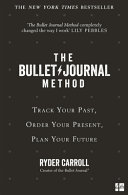

The Bullet Journal (BuJo) system is a customizable organization method that combines elements of journaling, to-do lists, and planning. Developed by Ryder Carroll, this system is designed to help users track the past, organize the present, and plan for the future. The method emphasizes simplicity and flexibility, allowing users to adapt the system to their unique needs. At its core, the Bullet Journal is based on rapid logging, which involves using short sentences and symbols to categorize tasks, events, and notes. This approach not only saves time but also encourages mindfulness, as users reflect on their daily activities and priorities. The system includes key components such as the index, future log, monthly log, and daily log, all of which work together to create a cohesive organizational tool.
Continue readingOne of the most significant aspects of the Bullet Journal Method is its focus on mindfulness and reflection. Carroll emphasizes the importance of being present and aware of one's thoughts and feelings, which can lead to improved mental clarity and emotional well-being. By regularly reviewing entries, users can identify patterns, assess their goals, and make adjustments to their plans as needed. The practice of reflection encourages individuals to consider what truly matters to them, fostering a sense of purpose and direction in their lives. This mindfulness aspect is not just about productivity; it's about cultivating a deeper understanding of oneself and one's priorities.
Continue readingThe Bullet Journal Method is inherently flexible, allowing users to customize their journals to fit their personal preferences and lifestyles. This customization can take many forms, from the layout of pages to the symbols used for rapid logging. Users can incorporate artistic elements, color coding, or even specific collections tailored to their interests, such as habit trackers, gratitude logs, or project planning pages. This level of personalization not only makes the Bullet Journal more enjoyable to use but also increases the likelihood that individuals will stick with the system over the long term. The ability to adapt the method to one's unique needs is a key factor in its widespread appeal.
Continue readingThe Bullet Journal Method encourages users to set specific, actionable goals and track their progress over time. By breaking down larger goals into manageable tasks, individuals can create a clear roadmap for achieving their objectives. The system promotes accountability, as users can visually track their progress and celebrate milestones along the way. This goal-setting aspect is particularly beneficial for those who struggle with procrastination or feel overwhelmed by their responsibilities. By using the Bullet Journal to establish priorities and deadlines, individuals can maintain focus and motivation as they work towards their goals.
Continue readingThe Bullet Journal community has grown significantly since the method's inception, with users around the world sharing their layouts, tips, and experiences online. This sense of community fosters creativity and inspiration, as individuals can learn from one another and discover new ways to use the system. Social media platforms, particularly Instagram and Pinterest, have become popular spaces for Bullet Journal enthusiasts to showcase their journals and connect with like-minded individuals. This communal aspect not only enhances the user experience but also reinforces the idea that organization is a personal journey, and there is no one-size-fits-all solution.
Continue readingRyder Carroll advocates for simplicity in the Bullet Journal Method, arguing that overly complex systems can lead to frustration and burnout. The core principles of the method are straightforward, allowing users to quickly grasp the essentials without feeling overwhelmed. By focusing on what is truly necessary, individuals can create a more effective organizational tool that enhances productivity rather than detracts from it. This emphasis on simplicity encourages users to strip away unnecessary distractions and hone in on what truly matters in their lives.
Continue readingWhile the Bullet Journal Method is primarily analog, Carroll acknowledges the role of technology in modern life. He suggests that users can integrate digital tools into their Bullet Journaling practice if it enhances their organization and productivity. For example, individuals may choose to use apps for reminders or project management while still maintaining a physical journal for reflection and creativity. This hybrid approach allows users to benefit from the strengths of both analog and digital systems, creating a personalized organization method that suits their preferences.
Continue reading